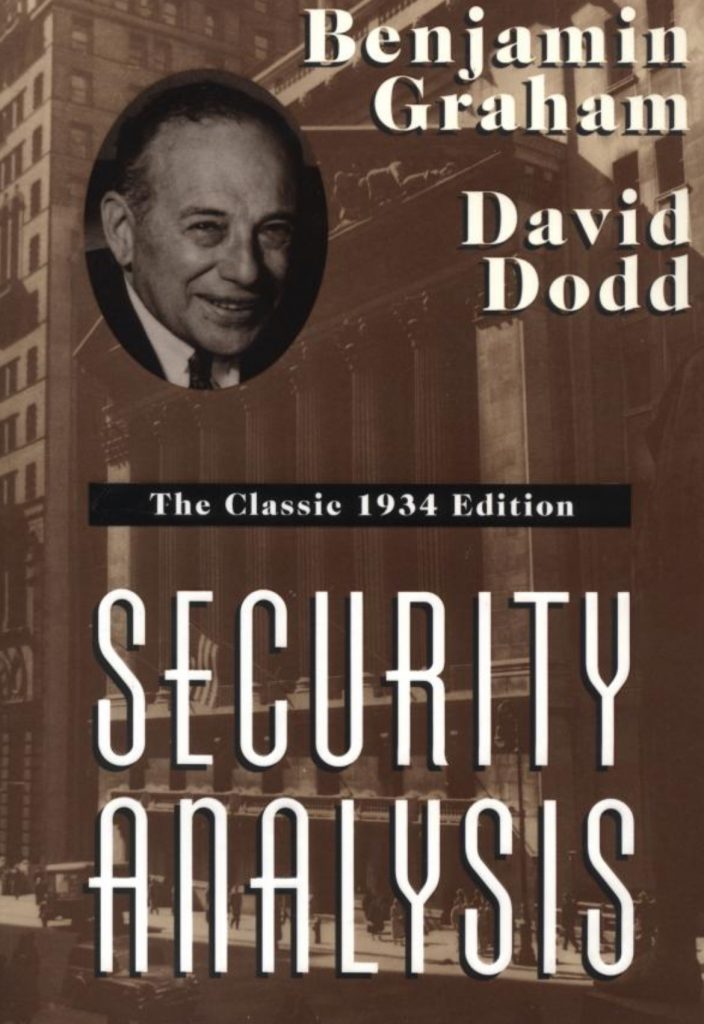As it turns out, the whole investment problem basically turns on valuation. Imagine that, in order to invest we need to figure out value? Again, just like with Cowles and Colorado, the Great Depression was the great impetus for people to examine “value.” How could something that was previously so valuable, be worth so little after the Great Crash and how did no one figure this out?
Ben Graham and the Rise of Value Investing
Several people stepped forward to offer a response, but none was more famous than a practitioner who taught on the side at Columbia University (today we’d call him an adjunct professor). That man was Ben Graham, Warren Buffett’s teacher, and mentor. Ben wrote a few books for which he is known, but is primarily Security Analysis which really defined the applied art and science of modeling value.

The timing of the first edition (1934) could not have been better because the Security and Exchange Commission had just been created and a flood of information was going to be made available to investors in a more regulated way than had previously existed and people needed to be taught how to model with the information. That is why Ben Graham is called the Father of Value Investing (or Modeling Value). The work was so successful that Columbia Business School to this day is still best known as the home of “Value Investing.” That was actually (other than Umberto Eco) the very reason that I went to Columbia University in the first place –because I wanted to learn more about modeling value.
Marrying Ben with Berkeley
It was because of the reputation of Columbia as the cradle of modeling value that the university targeted Barr Rosenberg’s top student, Jim Ohlson, to start a new research program focusing on valuation and how it related to the new Berkeley financial technologies. To land Jim from Berkeley, Columbia offered him to be the highest-paid academic in the world and he joined to lead their efforts. Once Jim was at Columbia, Columbia started working with some of the top banks in the world like Goldman Sachs and Morgan Stanley to build the foundation of the next revolution in finance.
This was the milieu into which I was recruited from humble Brigham Young University and the NeXT Computer lab. It was an amazing innovative place to be and as much as we did, it always went back to value. For example, from the faculty in my program ideas like setting up a systematic computerized software system for modeling value, while they were also figuring out how to keep track of the securities-related to that underlying value (and of course keep track of the associated values of those securities, another Berkeley-based idea). As important as the work that we were doing in the business school was, there were equally interesting things that had gone on next door in Computer Science, but that work was kept much more secretive.
David Shaw and the Birth of Quantamental Investors
Much of the interest and mystery around finance in the Columbia Computer Science Department centered around David Shaw, a professor who did early work on parallel computing and new database structures, an early example of integrated systems. Starting out working for Morgan Stanley, Shaw eventually left to found his own hedge fund that knocked, and continues to knock, the ball out of the park long after Shaw has himself returned to Columbia to become a senior research fellow at the Columbia University Center for Computational Biology and Bioinformatics. Not strangely, this is precisely the same area that Lee Hood wanted to address with a joint institute, and the same area the guys I visited with at Intermountain Healthcare are addressing with Amgen.
While they focused on forecasting value in the Columbia Business School, Shaw focused on trading, specifically very fast trading. In this sense, Shaw’s early strategies were focused on getting in and out before other people, all done without reference to the value at all. This was a great strategy for years, something that traders amazingly found that they had to add more and more context to make money and they’ve been slowly converging to addressing value, so much today that the biggest trend is so-called “Quantamental Investors” or people the can meld the insights that we get with value with the technology that gives additional insights and the ability to trade. Rather than give it a weird name, I just prefer to think of it as people using technology appropriately, something that everyone has to do in the daily battle for investment survival.
This brings us to the Golden Age, or at least what some are calling the Coming Golden Age, a subject I will address in the next entry.

